Back to top: Ceramics from Unit OH2
Introduction
Area OH2 is located in the northeast portion of the Outer City.
In this small excavation we found an administrative area from the early ED III period (ED IIIa) indicated especially by the well stratified ceramics and seal impressions.
The early ED III ceramics from OH2 were similar in shapes and wares to those from the High Mound dating to this time period.
These contexts are found in Temple BA, principally the white floor of the temple, area K1 just outside the inner city wall, principally in feature 16, and excavation units J1 and J5 connected with the two escarpments.
In all these contexts, shapes that were used throughout the period were found, especially the double-mouth jar.
From the surface of the Outer City we discovered a small handmade round vessel also with double openings; this may indicate that a double mouth vessel was in use earlier.
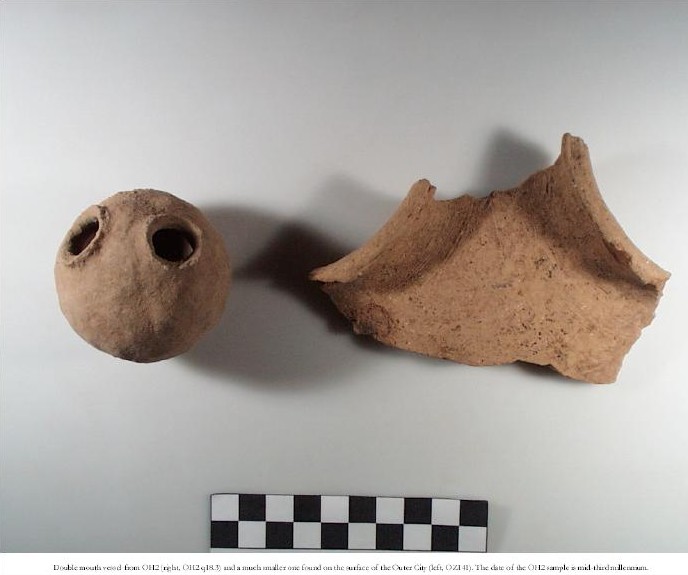
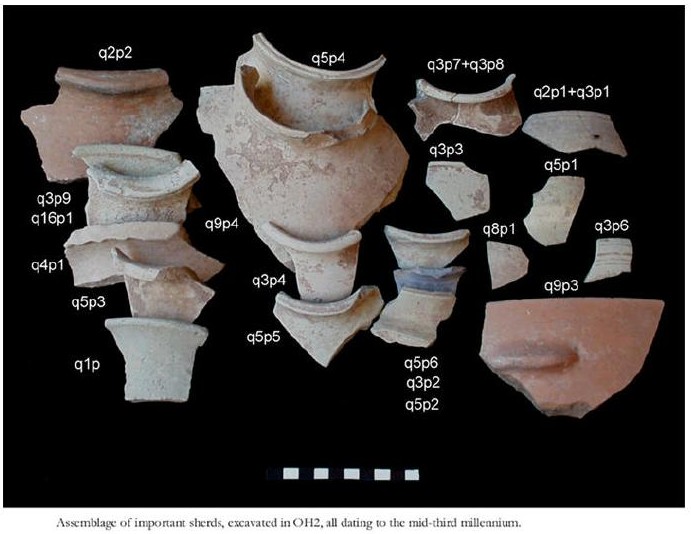
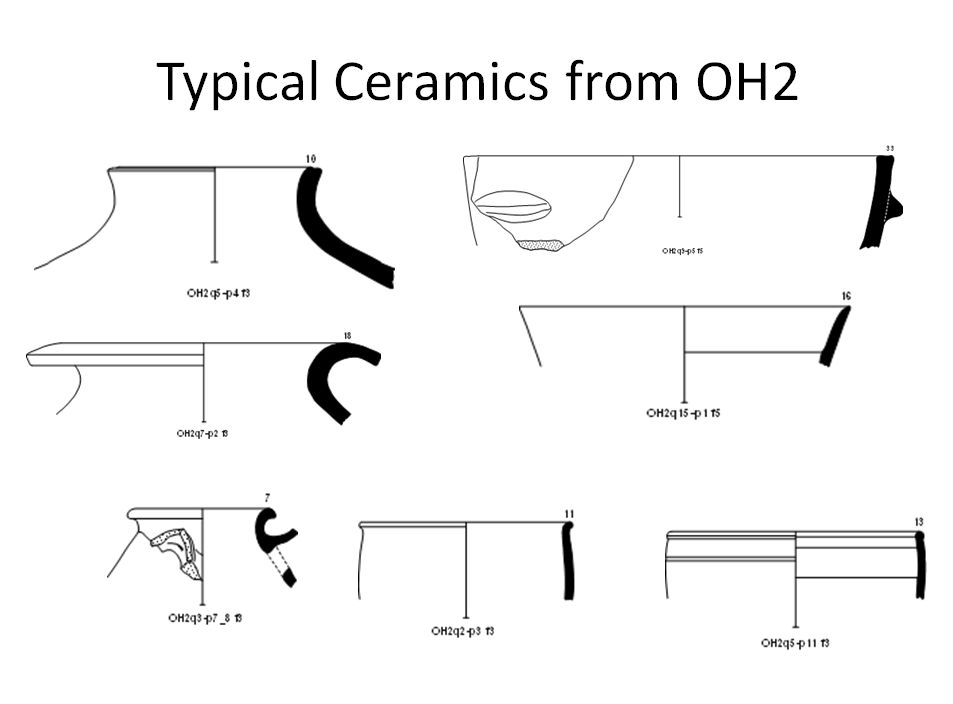
Back to top: Ceramics from Unit OH2
Ceramic connections with Early Dynastic II
The ceramics from this stratum have some similarities with the latest ED II ceramics.
Examples include short necked jars, usually globular in shape with a narrow straight or slightly flaring rim, either plain or with a small channel down the center of the top of the rim.
This channel is narrow and shallow and must at this point in time have been decorative.
The short necks on these jars would make tying a leather or cloth cover easy and efficient.
This type of jar shape, although carried over from the Ninevite V period, is produced during early ED III in a ware that is generally buff in color, medium fired with more inclusions and therefore coarser in texture than the medium fired but yellow-buff ED II jars.
Small spouted jars and pots with a short spout containing a narrow flange were not well represented but were found in Temple BA and K1.
Since this type was already being produced in the ED II period, it appears likely that there was a continuation in the production and probably also the function of this type from ED II into early ED III.
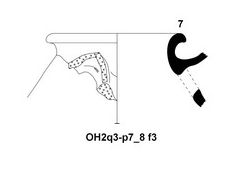
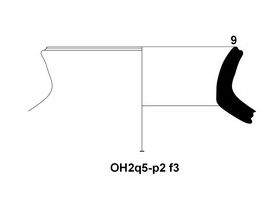
Back to top: Ceramics from Unit OH2
OH2 statistics
Back to top: Ceramics from Unit OH2
L. Recht & M. Kelly-Buccellati
A total of 690 sherds were collected and analysed from OH2, 115 shape sherds and 575 body sherds.
The majority (506) can be assigned to ED III, while the remaining (183) come from the top soil.

As typical for Mozan, Chaff Temper Ware (CH) is the most common in OH2,
but there are also noticable amounts of Wet Smooth Ware (WS),
Fine Chaff Temper Ware (FC),
and Pebble Temper Ware (P).
The small and thin walled vessels, for the most part small bowls and cups, made in the early part of ED III are not as fine as the ones introduced later in the middle of the period, as they have more temper, are generally lower fired and the interior and exterior surface textures are not as smooth.

Unfortunately, the low number of ED III shape sherds from OH2 does not allow us to draw definitely conclusions.
However, we can say that overall, jars are the most common vessels, with lower numbers of bowls, cups and pots.
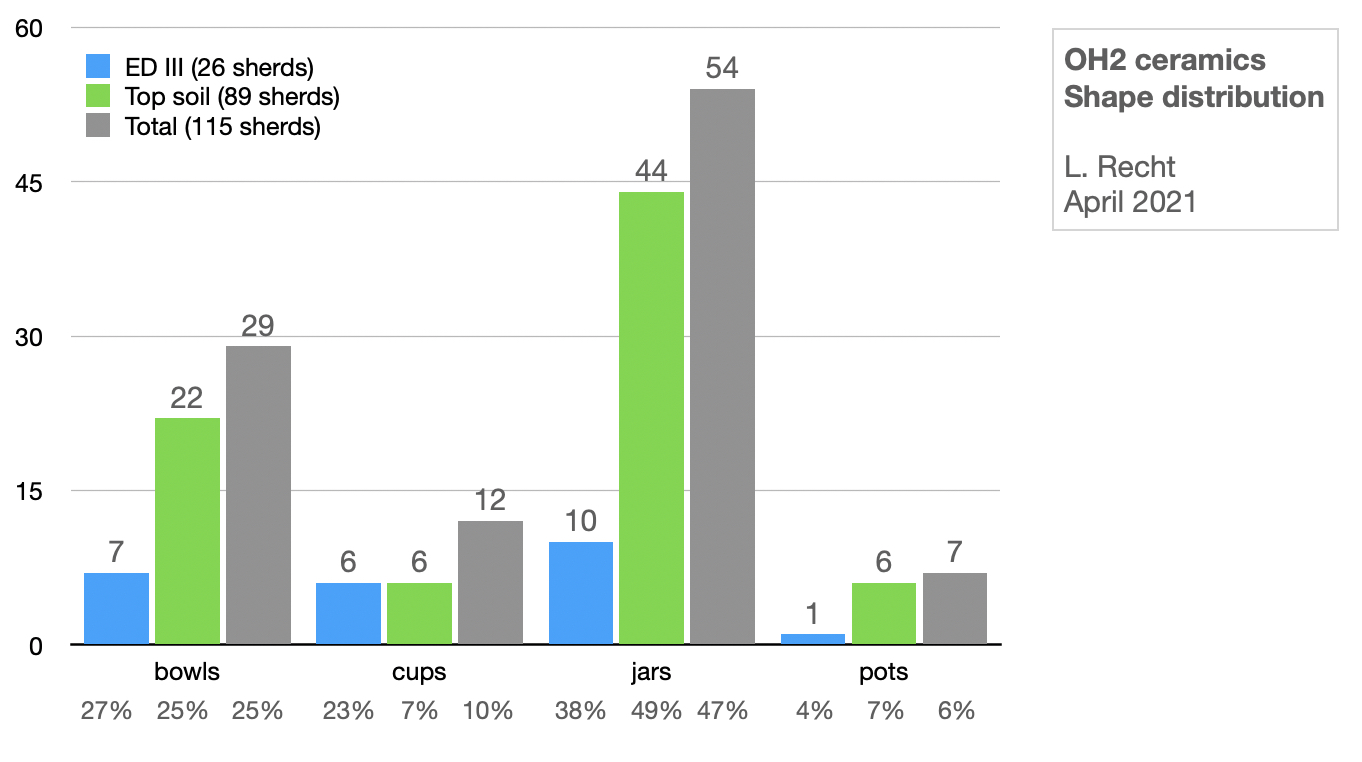
Back to top: Ceramics from Unit OH2
Jars
The earliest ED III ceramics are characterized by a number of medium jars with three body types: globular, cylindrical and ovoid.
What distinguishes this category of jar is the presence of a folded rim with a deep interior groove.
This type is functionally connected by the use of lids in preserving the contents.
Rims with interior grooves are found throughout the ED III period in Mozan and continued later even as late as the late Akkadian period as evidenced by the pottery from the reuse of the palace building in the late Nar’am-Sin period, dated by the seal impressions of Tar’am-Agade.
However, the early ED III type has a deeper and wider groove.
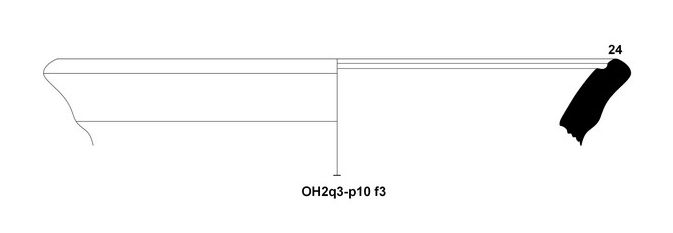
Back to top: Ceramics from Unit OH2
Bowls
In OH2 as well as in J1 below ^esc1, and Temple BA, a large deep bowl with a squared rim with a slight flange was found, some sherds show that at least some of these bowls had a tab handle (and probably two handles) placed near the rim.

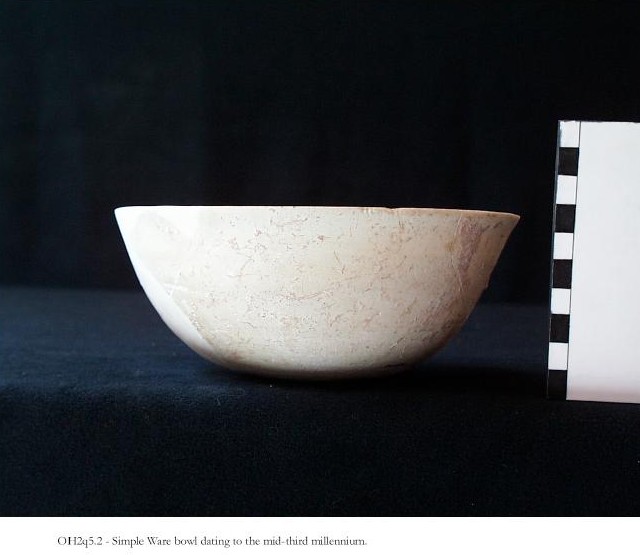
Back to top: Ceramics from Unit OH2
Cups
While small bowls could also have been used as cups, conical cups in this time period are the most common cup type.
CKCKCK in CHARTS
Back to top
Back to top: Ceramics from Unit OH2